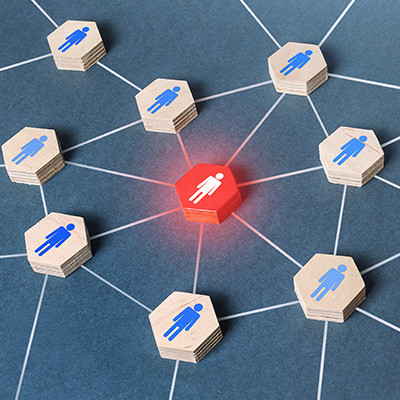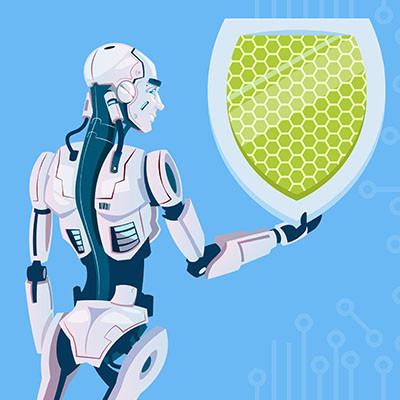Every organization has a lot of things that could go wrong in the course of doing business. They can run into supply chain issues, employee turnover and poor performance, natural disasters interrupting your “business as usual”, but one of the most unassuming, yet worrisome threats to your business is the cyberattack. This month, we go into a few ways cyberattacks threaten your business and how they play out to give you an idea of how to prepare.
Network Synergy Blog
In this blog, we do our best to give people the knowledge they need to protect themselves and their organizations while operating online. With all the digital tools that we all have come to rely on, it’s important to understand the result of a data breach on organizations and their customers. In today’s blog, we go through six of the most devastating data breaches that happened in 2023.
A New Year can be about self-improvement. Most of us make lofty goals to spend more time at the gym, or to stop sneaking spoonfuls of uncooked Pillsbury Cookie Dough right out of the tube from the back of the fridge at four in the morning. Some of us accomplish our goals, and some of us have gotten really good at hiding that Pillsbury Cookie Dough wrapper in the bottom of the trash so nobody realizes it’s gone. All joking aside, it feels good to make accomplishments, and I truly hope that anything you set your mind to is able to happen for you.
If you are looking for an easy resolution that will help you sleep better at night and is extremely easy to maintain, I’d highly suggest that you prioritize your own personal cybersecurity in 2024.
It will take a little effort, but trust me, it will save you a lot of headache down the road.
Your business’ computing infrastructure is a pretty resilient system. It has all types of tools added on to keep malicious code, bad actors, and even sabotage from ruining the good thing you have. This reliability has led to hackers changing the way that they go about their business. Nowadays, most of the attacks that affect businesses are phishing attacks. In today’s blog we will go through the elements of a phishing attack and how you can protect your business from them.
The Internet of Things is everywhere and that means that it’s important to understand how much of a potential security risk these devices can be. From smart speakers to smartphones, it's important that you understand how these devices can create problematic situations. In this week’s blog we will discuss how you can protect yourself against IoT vulnerabilities at home.
Threats are everywhere in business today. You can quite literally be sitting at your desk actively working in your email and be exposed to multiple scams. With this revelation, it is essential that every organization takes the steps necessary to secure themselves against the immense amount of threats that could put their network and infrastructure at risk, and do so without making it difficult on their staff. Let’s dig into what that takes in this month’s newsletter.
Security is extremely important for every single organization that uses IT. Like any other part of a business where practices and demands change frequently, there is bound to be significant innovation involved with the strategies built to protect users and the business as a whole. Let’s look at why it is important to continuously innovate your organization’s cybersecurity policies and procedures.
You know the old phrase, “A chain is no stronger than its weakest link?”
It’s a pretty good idiom, but when it comes to cybersecurity, I think the idea is worth revisiting. It’s not that you aren’t as strong as your weakest link, or in terms of cybersecurity, it’s not that you aren’t as secure as your most vulnerable endpoint…
You are less secure the more users you have.
Small businesses have a lot to worry about in terms of technology, but one of the things that often gets overlooked is network security. Some small businesses feel that they are too small to be considered a viable target for hackers, but they are wrong; all businesses have data valuable for hackers in some form.
When security breaches and data breaches are mentioned in the same breath so often, it’s easy to look at them as one and the same. However, we want to take a moment to explain the differentiating factors between the two, as it could be all the most important for protecting your business in the future.
The effectiveness of your business’ IT security is largely contingent on how your IT operates. As a result, it is extremely important to ensure that your staff understands the role they play in protecting your business’ assets. This month, we discuss what you should prioritize when putting together a security training platform; an essential part of any business’ attempts to keep their IT secure.
How quickly do you think it takes for a hacker to react to the disclosure of bugs and vulnerabilities? According to industry experts, the time for security professionals to react to zero-day threats and vulnerabilities might be decreasing. Is your organization prepared to act when important vulnerabilities like these are disclosed?
Mobile devices demand a special type of attention in order to ensure security. You want to ensure that your devices are protected as well as possible, but you also need to ensure that this does not come at the expense of your employees’ productivity or efficiency. We’ve put together a list of common security issues you might encounter when securing your mobile devices, as well as a couple of practices you can implement to work toward an adequate level of cybersecurity for your mobile infrastructure.
When it comes to network security, businesses need all the advantages they can get, especially since cybersecurity as an industry is one which is rapidly adjusting and responding to an enormous amount of ever-changing threats. One way in which security researchers have attempted to subvert this security rat race is through artificial intelligence measures, a trend that promises to change the way businesses protect themselves more effectively.
For every level of business, cybersecurity is a big deal. For the enterprise, they deal with a lot of would-be attacks and need their staff to know how to respond if they are targeted. For the midsize business, the convergence of underwhelming IT support and a growing workforce can be the perfect storm. For the small business, a significant cyberattack could be the beginning of the end for their business. This is why, no matter what size your business is, you need to have a cybersecurity strategy in place that includes tools, monitoring, and protocol. This month, we have put together a list of considerations your business should note to keep your network and data safe.
With cybersecurity a priority for every business that depends on their IT, there are a lot of different strategies being utilized out there to keep threats off of networks and data safe. One of the most advanced strategies being used today is enlisting a service that runs a Security Operations Center (SOC). Today, we’ll investigate what a SOC is and how it works to keep threats at bay.
Whether you’re referring to ransomware, phishing, data theft, spoofing, any of the many forms of cybercrime, it is something that all businesses need to prepare themselves for. While different business sizes will have differing scales to contend with, these kinds of preparations will involve the same basic principles. To help you best defend your company against cybercrime, here are a few tips based on those principles.
Getting your staff to care about your organizational network and data security may be more difficult than you might think, but it’s not a lost cause. Today, keeping your business’ organizational security strong relies heavily on your staff’s willingness to follow the right practices, so today we thought we’d give you seven tips to get your people to care about security
In the business world, it can be difficult to know who to trust in regard to cybersecurity. In many cases, businesses are simply opting to not trust any device, friend or foe, when it comes to their data security. This type of zero-trust model is slowly becoming the norm, and it’s one that your organization might consider moving forward.
Penetration testing is a topic that you might often hear and read about on the Internet, but you might not know exactly what it is without having it explained to you by a professional. Today, we want to clear up any misconceptions or ideas you might have about penetration testing and how it relates to your business’ network security, compliance, and regulatory requirements.




















